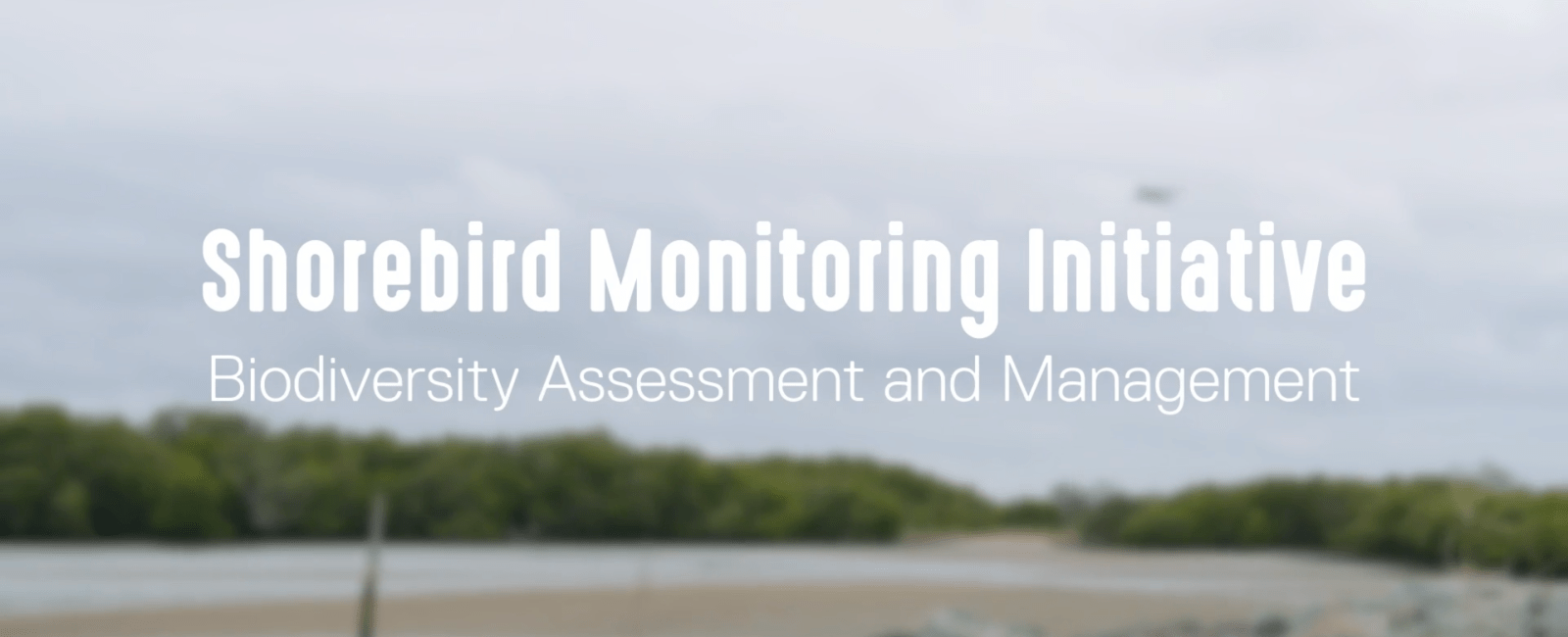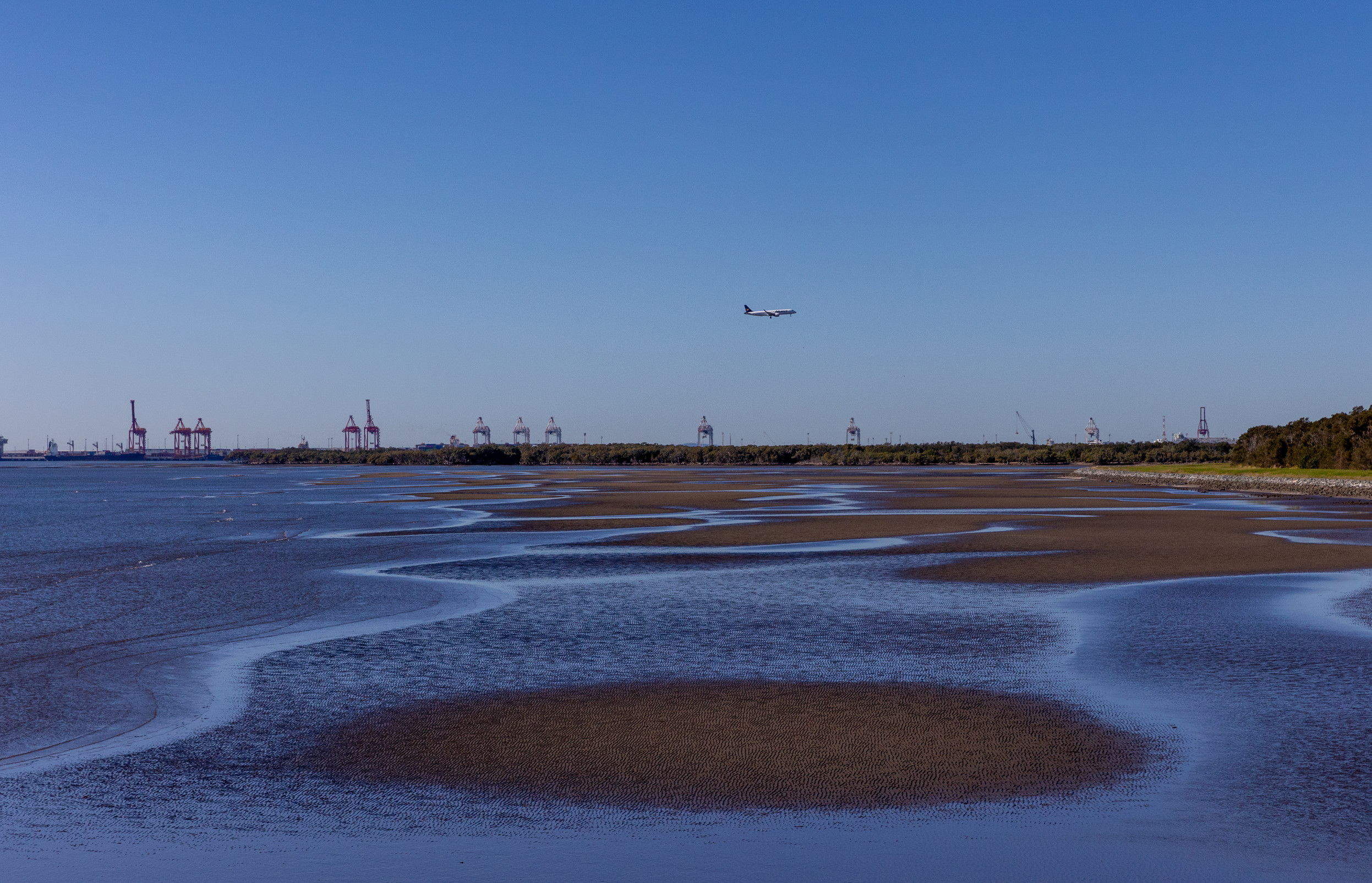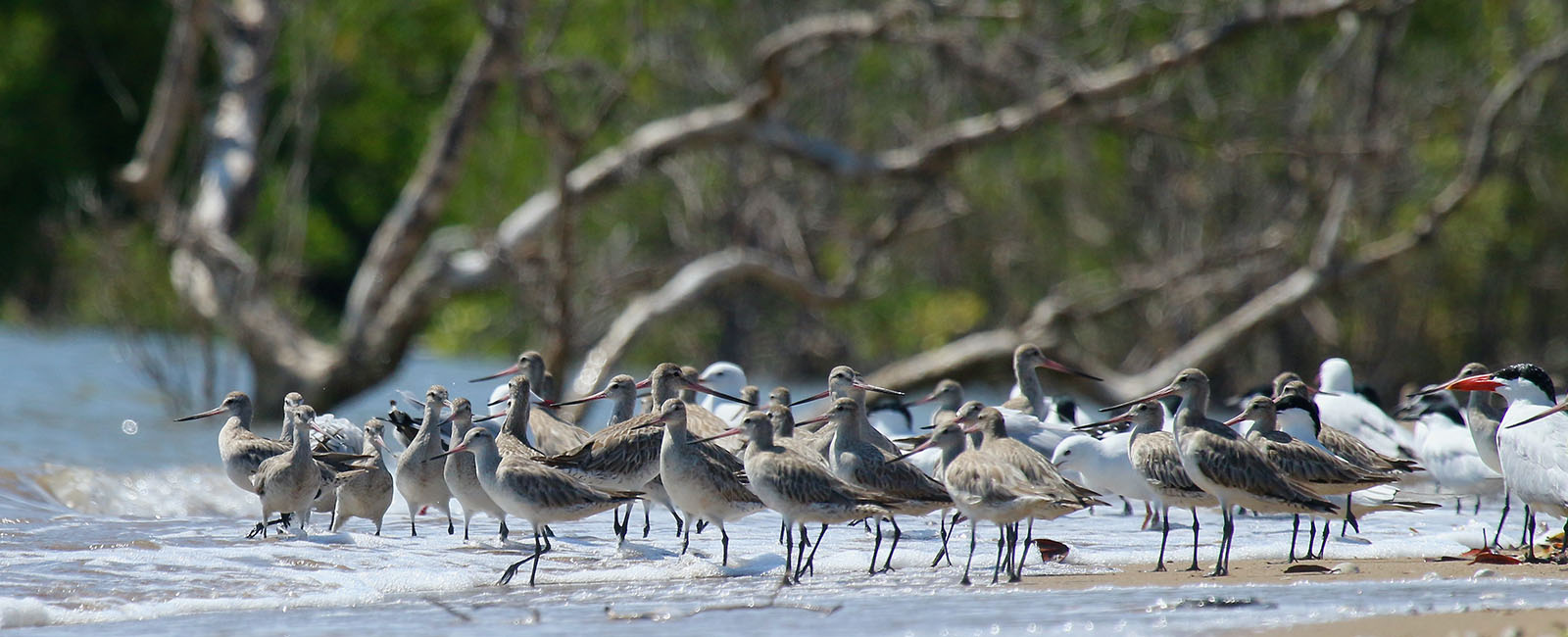
Every summer around 30,000 migratory shorebirds call the intertidal sandflats of Brisbane Airport’s foreshore home. The sandflats represent an important feeding habitat within Moreton Bay, an official Ramsar site, one of only five in Queensland.
For the past 12 years, Brisbane Airport Corporation (BAC) has been monitoring the shorebird population and species present to ensure their habitat is protected for future generations. Belinda Kennewell, Environment Manager at BAC, shares insights into BAC’s commitment to growing sustainably and how the shorebird monitoring program came to be.
“Here at BAC, we have in-house Environment and Sustainability Teams that provide specialist advice to support the business to protect the environment of Brisbane Airport in the long-term and to ensure that we grow sustainably.
“Particularly as we're embarking on Future BNE, our biggest transformation growth projects, investing more than $5 billion at Brisbane Airport to ensure we're ready to meet the needs of Queensland’s future population and our community while growing responsibly,” said Belinda.
As part of BAC’s conservation efforts, a dedicated Biodiversity Zone, representing 285 hectares, was established in 2010.
“The Biodiversity Zone here at Brisbane Airport is really special. It's an area that BAC has dedicated purely for biodiversity conservation purposes. So, the size of that area is 285 hectares which is around 10% of all our airport lands. To put that into perspective, it's almost the size of Manhattan’s Central Park.
“By conserving this land, what we're doing is providing habitat, including wetlands and grass habitats for important native species. That includes protected species like our migratory shorebirds,” said Belinda.
Migrating from one side of the planet to the other, one of the species of shorebirds is the Bar-tailed Godwit, these endurance flyers are the world record holders for non-stop flight. They have been recorded travelling 13,500km from Alaska to Tasmania in only 11 days flying at an average of more than 50km/h.
Assisting BAC with the shorebird monitoring program is Biodiversity Assessment and Management (BAAM), an ecological consultancy organisation that has been providing a variety of ecological assessments and monitoring to BAC for the past 10 years.
“The monitoring was initially undertaken as part of the New Parallel Runway development as Brisbane Airport grew. However, it is a great program, adding significant value to our understanding of shorebird populations in our Biodiversity Zones, so it is a program that we have continued since the New Parallel Runway opening and intend to continue,” said Belinda.
BAAM Principal Ecologist Penn Lloyd shares the diverse range of species identified from the monitoring over the years, including several threatened species.
“The migratory shorebirds we saw, starting from the largest, is the Far Eastern Curlew, Bar-tailed Godwit, Eurasian Whimbrel, Great Knot, Red Knot, Curlew Sandpiper, Sharp-tailed Sandpiper, Redneck Stint, Pacific Golden Plover, Grey Plover, Lesser Sand Plover, Red-capped Plover and Masked lapwing,” said Penn.
“Monitoring results continue to indicate the significance of the Brisbane Airport foreshore as an undisturbed feeding ground for migratory shorebirds. Interestingly, aircraft movements overhead do not disturb the shorebirds, however, birds of prey overhead do!” said Penn.
Belinda explains that the efforts of restricting this area are proving to be effective in ensuring the shorebirds can forage and roost.
“The evidence is telling us that aside from some annual variability, the population of migratory shorebirds here in Moreton Bay is stable."
“We've recorded a total of 49 different water birds and coastal raptors that have either been foraging or roosting along the Brisbane Airport foreshore. This includes 21 different species of migratory shorebirds, eight resident shorebird species, 26 other types of water bird species and four coastal raptor species. So, we have a lot of species richness in terms of our bird populations.”
“The feeding area for the shorebirds is a restricted area and there's very tightly controlled access to that land. So as a result, the shorebirds foraging in that area receive very limited disturbance by people in comparison to similar habitats along the other shores of Moreton Bay that are closer to more densely populated suburbs,” said Belinda.
As Brisbane Airport continues to grow with Queensland’s population, the BAC team have their sights set on a journey of constant improvement and that includes implementing an accelerated Sustainability Strategy.
“I’m excited to be a part of the BAC team as we continue our sustainability journey; building on past achievements such as establishing our Biodiversity Zone and putting our ambitious future sustainability commitments into action. We’ve accelerated our Net Zero target for scope 1 and 2 emissions by 25 years to 2025 and that includes building another 5-megawatts of solar capacity by 2025,” said Belinda.






